This article will consider a very beautiful and useful plant Rhododendron pink (from the Greek - pink tree). We highlight the highlights and talked to important trifles, without which the cultivation of this deciduous is impossible.
Rhododendron pink (or pricillum) - Description
- Belongs to the heather family. Originally from Canada. Grade deciduous.
- In natural form, it reaches from 1.3 m to 2 m (very rarely), and at home (Canada up to 3 m). Ellipsoid leaves, 3-7 cm long covered with rare hairs.
- Color dials about 4-9 flowers. The beginning of flowering in late April - mid-May, duration 2 weeks. The color blooms together with the first leaves. Perhaps flowering and twice a year, the second - in the second half of August.
- The disembarkation should be made on the rocky soil, Rhododendron Pink like "live" by groups.
- Pretty frost, but with large frosts (below -30 ° C), part of the tips of young shoots commemorate.
- The main reproduction occurs with seeds from the bush itself. But it is possible an artificial reproduction by adjusting a separate twig to Earth, and in the place of conceived rooting, a small incision is made on the branch. It should be done immediately after turning the color on the bush. After rooting the branch - it should be separated from the maternal bush (trim).
- With proper agricultural engineering, the approach with the lighting and fertilizer of the soil, the bush has elegant (cap) flowers that literally close the entire bush. Under the observance of simple rules - blooms twice per season.
Rhododendron pink amamine. Important rules for growing
When growing Rhododendron from seeds at home, adhere to the following rules:
- we choose the dishes so that it is in width and length there is more than height - this is due to the fact that the root system extends more into the width (on the surface) than in the depth;
- soil filled with predetermined fertilizers;
- in one layer on the ground (in a pot), we settle gauze, slightly press it to the soil and lay the seeds in the order we need;
- this method will give a greater percentage of seed shoot than the usual way, due to the good air and light approach;
- constantly spray the seed, not giving him, earth and gauze to push (5-7 times a day and abundantly at night);
- put the dishes with the seeds on the window sill on the sunny side;
- locked in the ground follows the rules described below.
Rhododendron Pink - Preparation of Earth Fertilizers, Choosing a Place of Landing
First you need to decide on the soil for planting Rhododendron Pink:
- the soil is chosen according to its moral - the weakness and not rich lime;
- it is possible to prepare the Earth from the autumn - feather the same way as usual - manure, sand, sawdust (instead of sawdust you can step up the ground with dry weeds separated from the roots);
- if we make fertilizers immediately before the rhododendron disembarking as seedlings, then sand and manure into the hole, and sawdust sprinkle on top after the landing itself;
- if the garden seeds (if the climate allows), then the sawdust do not bring until the sprouts are at a height of 10-15 cm.
Rhododendron Pink - Important Trivia
After the preparation of the soil for landing or sowing - you should pay attention to a number of very important trifles:
- rhododendron root system is located more than its part in the upper layers of the soil, and almost does not go deep into the depth - so when landing already grown at home is a bush, it is necessary to prepare a well in the width and depth of land in accordance with the volume and future location of the roots in the soil ;
- you can plant already at the beginning of May, but when freezers will not be exactly;
- choose a place without water in the ground during the rains;
- lighting should be chosen by a pulmonary - it is desirable that at noon the bush remained in the shade, Rhododendron although it loves light, but there may be burns on the leaves with frequent direct contacts with sunbeams.
Choosing "neighbors":
- bad: Oak, Maple, Willow, Birch;
- good: splashing apple trees, larches, pines, pears, ate.
Care for Rhododendron Pink AMOINA at different times of the year. Winter hardiness
Consider the main points of the necessary care for Rhododendron Pink:
In the spring:
- on time (early in spring - before the appearance or yield of the kidney), we open the bushes so that they began to "breathe" and not break the kidneys, choosing not sunny weather so that the sun does not harm the harm not yet woken Rhododendron;
- partial, not more than 25% (!) Cutting the bush, both old branches and "false" (unnecessary) for proper formation of a bush;
- spring irrigation, both nature and a person, must comply with the needs of the bush;
- weeding from weeds, which take moisture from the upper layers of the soil and do not eat Rhododendron;
- weeds (their upper part - without roots) can come in handy in dry weather, as a natural bedspread, from evaporation and exhaustion of soil from moisture - cover the ground under the bushes;
- soil looser;
- processing bush from pests and diseases;
- if necessary, it is possible to omit several branches with cuts to the ground, as described above, for reproduction;
- feeding fertilizers, nitric and mineral groups.
Summer:
- watering - control over the moisture content on / in the ground (with arid weather, try to pour a jet to the bush itself, as if irrigated - spraying it);
- weeding (working with weeds, as described above, to preserve moisture in the soil), loosening;
- processing of perennial means from pests and diseases - if necessary;
- in the first half of the summer, it is necessary to make feeding with liquid fertilizers, in the second half, it is not worth experimenting that the bush does not start producing young shoots for the winter.
Autumn:
- output of the old color in late autumn - for more abundant flowering next year;
- exclude all feeding, with the exception of the manure (first cover the earth) and sawdust (from above, you can pour a small layer of sawdust on top of the manure) - in the spring, when you open the bush, applied with autumn, partially decomposed, will start harder to warm the soil;
- autumn is often arid, at this time it is especially important that Rhododendron do not succeed, so irrigation is an integral part of the care;
- hiding the bush for the winter - slightly link the branches in a small broom, it is possible to bite into something warm and cooler something like a bag;
- if the site is possible in the appearance of mice, we do this - 1.5 liter of the plastic bottle cut off the neck and the bottom, then cut down one edge from top to bottom, so that it delighted the barrel on the side.
Generally rhododendron pink elegant tolerates the winter in a temperate climate. With a decrease in temperatures (harsh winter) - it should be treated with the wintering of this plant with caution - to cover the BOTS and the Earth from frostbite to the onset of positive temperatures.
Rhododendron pink elegant, his pests, disease
- Rhododender Kophop is the most common pest on Rhododendron elegant, the length of this beetle is about 3.6 mm, leaves on the leaves bleached small stains. From the inside of the sheet for the winter until spring, puts the eggs of brownish color. Measures and methods of struggle: Spraying with diazonin solution.
- Mute Cherberry - a flat pest with a length of 2-4 mm, lives on the leaf veins and clogs on the cracks in the crust and sucks the juices from there. Changes 2-5 generations per season. Measures and methods of struggle: spraying with a carbofosomic solution 3-4 times a year.
- Frozen weevil, or a corrugated zeror - beetle, black (young part of brown-yellow color). Embed edges of leaves, kidneys, buds and bark. Appear in May-June, winter in the soil under the plant, the larvae appears in the spring, similar to the larvae of the May beetle.
- Measures and methods of struggle: watered with a solution of 0.2-0.3% carbofos emulsion. Night spraying with the same solution (the period of activity of adults). Also helps spraying with diazonin and furadow;
- The web tick is the length of the insect up to 0.5 mm, stretches the web on the back of the sheet on all directions, feeds on the juice of the leaves, which later boil and fall. Measures and methods of struggle: spraying with diazonin, anthemny;
- Asian Garden Khrushcher - eats leaves, eats the opening of the wrong shape, leaving only the accommodation, the larvae live in the ground in the roots, eat the roots and stem. Measures and methods of struggle: Spraying with diazonin.
- Slisen is thin - most often amazing the leaves of young plants, dangerous by the speed of eating, in a short time it is capable of destroying a young plant. Measures and methods of struggle: pouring 0.8% solution of TMTD, the destruction by collecting manually by adult individuals from the plant.
- Black TRIPS is a greenhouse pest, but it began to occur in the outdoors, the length of the individual is 1-1,5 mm black. It is powered by leaves, leaves characteristic traces - on the upper side of the sheet, holes are formed, and on the bottom black, the leaves take silver color, die and fall. TRIPS causes the ultra of flowers and lagging in the growth and shoots of the plant. Measures and methods of struggle: Spraying with a solution of 0.2-0.3% nicotine or 0.2% carbofos emulsion.
- The narrow-colored mole-minister - the caterpillar, breaks through the moves in the sheet, feeding them, then, the growing, turns the sheet for pokuclings. Measures and methods of struggle: Spraying or enormous sulfur.
- Rhododendrian flies - lives on the bottom of the sheet, and light spots with a pin head appear on the top. Measures and ways to combat: spraying nicotine sulfate.
- The greenhouse and leggings are striking young shoots, leaves, buds, feed on the juice of plants and leads to their death. Measures and methods of struggle: spraying with a 0.3% carbofos solution or 0.1% accuters or an ambush solution.
Diseases caused by adverse conditions
- Mixed chlorosis - Yellow spots appear along the edges and tips of the leaves - lack of nitrogen and potassium, can also cause stagnation of water from the roots.
- The lack of nutritional items can cause the appearance of red spots along the veins, turning the leaves into the tube, drying the branches. With nitrogen deficit, the leaves of Rhododendron pink elegant becomes smaller, inflorescences are not so rich.
- Necrosis - as the cause of the elimination of the main vein of the sheet, at which the top side of the sheet becomes brown. The reason most likely served as a sharp decrease in air temperature or soil.
The use of rhododendron pink in folk medicine
Rhododendron can be treated when other methods and methods are less effective.
In addition to decorative significance, Rhododendron has therapeutic properties. It was used and the ancient folk heals of Japan, Mongolia, China.
In modern times, it has many different applications in traditional medicine:
- female oncological diseases - erosion, inflammation and information of their malignant properties to a minimum;
- with colds - rinse throat prevents inflammation of the larynx and the development of bacteria and mushrooms in the cavity;
- assigned to mercury poisoning;
- in epilepsy;
- rheumatism.
And many other applications, the main thing is to remember - in Rhododendron contains poison - poisonous glycoside - Andromedotoxin, therefore, with all its benefits, do not engage in self-medication, please contact a sensible and competent doctor!
Be careful and when graceing your cattle, Andromedotoxin can serve as the death of your cattle.
Also, it is not necessary to use honey, assembled in the proximity of this plant - toxin may be contained in pollen. Such a product may cause human poisoning.
Rhododendron pink, photo
Rhododendron pink AMOINA, elegant - very famous in the whole world and, of course, he is chic in his own way.
Leonardslee Gardens (Leonardslee Gardens), is located in England - access to visitors opens during the flowering period of this chic plant:
Rhododendron "Cynthia", which has been more than 100 years old, it is located in the city of Ladysmith, on the island of Vancouver:
Of course, this plant will bring a lot of beauty to the site, garden or vegetable garden to your life. Care for him and he undoubtedly thanks you!

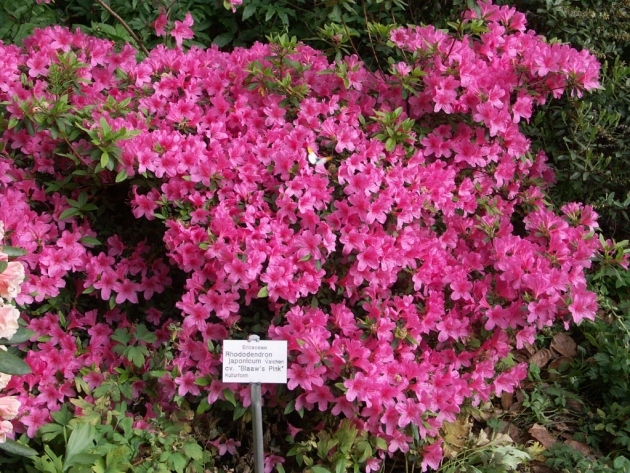
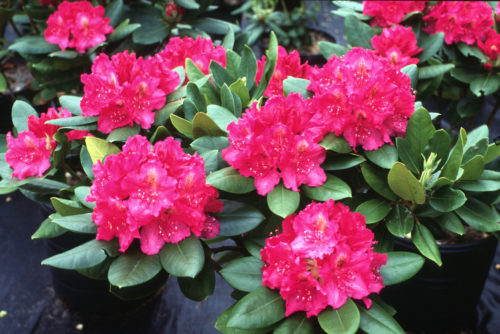
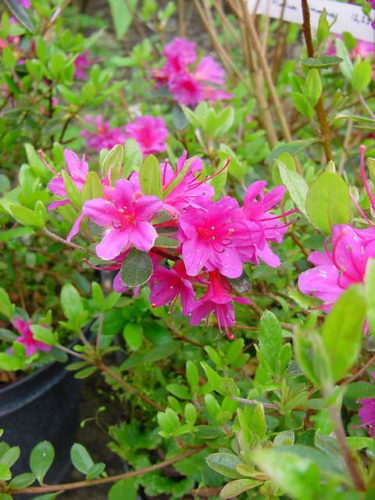
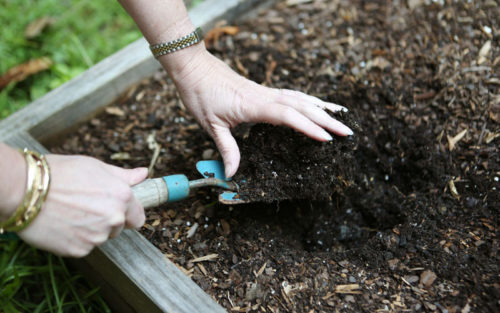
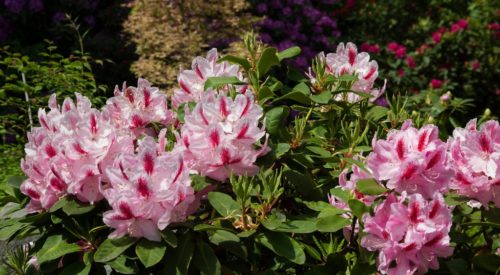
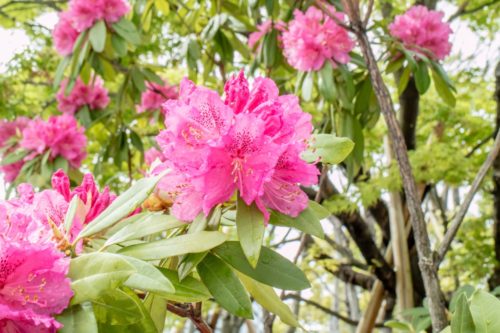
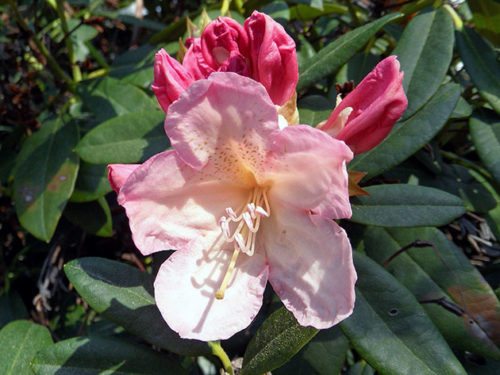

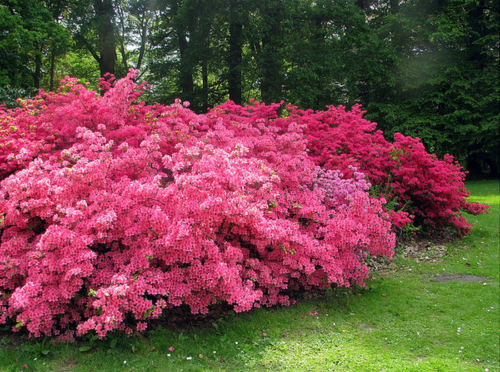
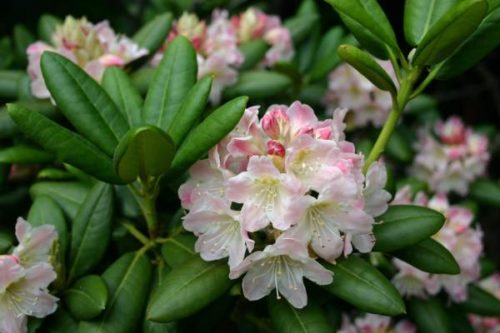
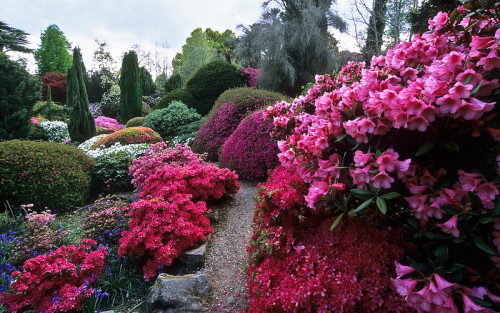
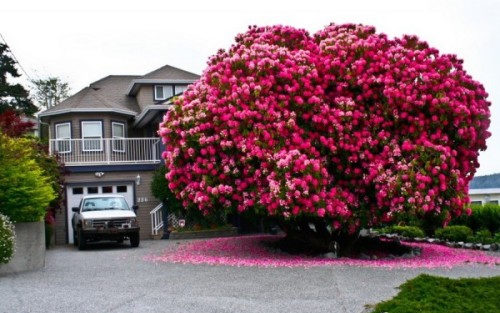












 Start a discussion ...
Start a discussion ...